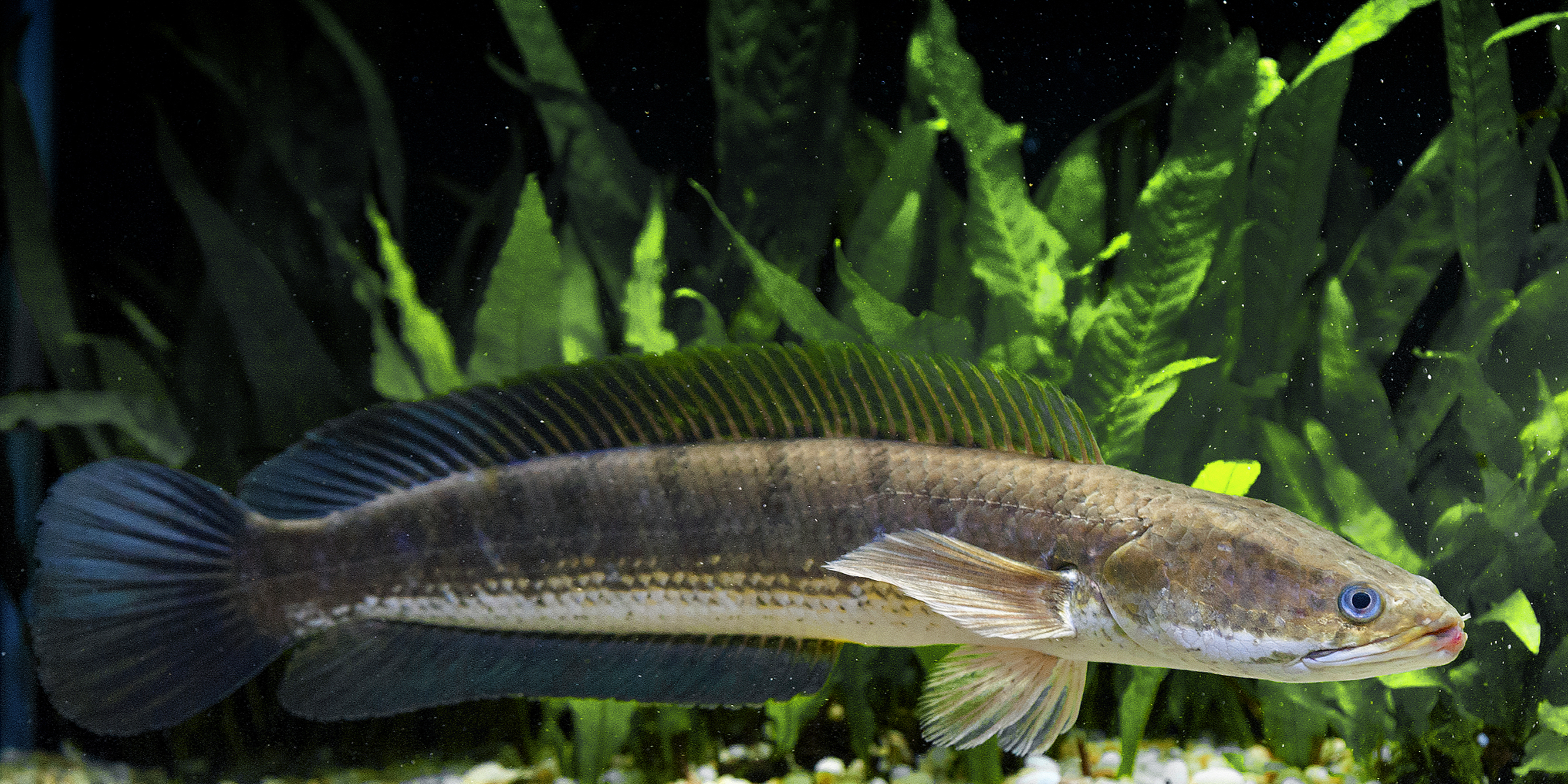
Figure 1: Live adult specimen of the common snakehead (Photo: Eric Er; used with permission)
Table of Contents
Overview
The common snakehead (Channa striata) (Figure 1) is a widely distributed tropical fish species from the Channidae. It is ecologically important as a major aquatic predator, known for its hardiness and adaptability, and prized as a food fish and sport fish. Occasionally, the common snakehead is kept as a "monster fish" in the ornamental trade, where like other snakeheads it is appreciated for its bold and active disposition. The main aim of this page is to accessibly summarise information on the biology of the common snakehead for the benefit of casual audiences such as nature enthusiasts, ornamental fish/aquarium hobbyists and students of biology. In addition, this page also includes a section on the taxonomy and systematics of the common snakehead for more technically-inclined readers.Common names
Banded snakehead, chevron snakehead, common snakehead, snakehead murrel, ikan aruan, haruan, ruan, toman paya, sheng yu, etc.Distribution
The common snakehead has a wide natural distribution ranging from tropical Southern Asia to most of Southeast Asia [1, 2] (Figure 2), including Singapore. In parts of Southeast Asia where it is not native (i.e., the Philippines, Sulawesi, and Papua), it has established as an alien species following introduction as a food fish.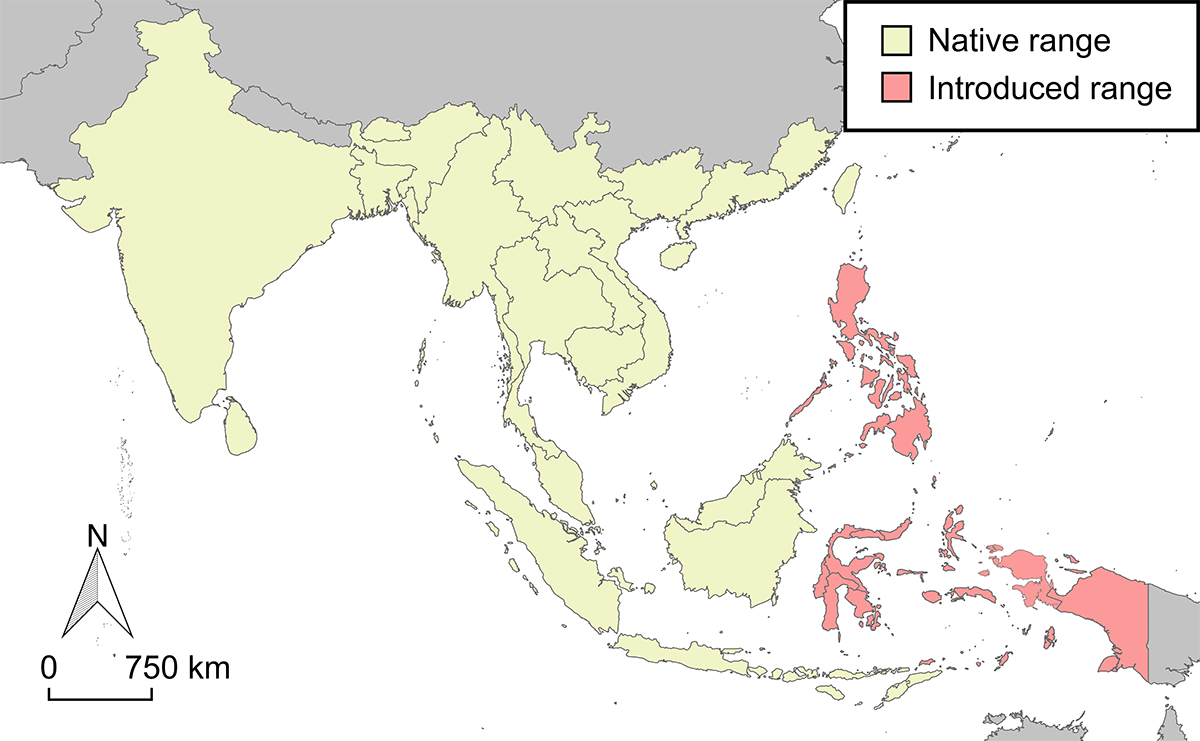
Figure 2: Native and introduced distribution of the common snakehead Channa striata (after Chaudhry, 2010 [1]; Courtenay & Williams, 2004 [2])
Habitats
Within its native range, the common snakehead is widespread throughout lowland regions [3]. It can be found in shallow (< 1 m), stationary/slow-flowing waters thick with bank vegetation (Figure 3A). This species is highly adaptable, and can be found over a relatively wide range of temperatures and pH [3]. As such, the common snakehead can also be found in artificial habitats such as ponds, canals, padi fields [4-6] (Figure 3B). In Singapore, it can be found in streams of the Central Catchment Nature Reserve, and occasionally seen in monsoon drains and artificial ponds.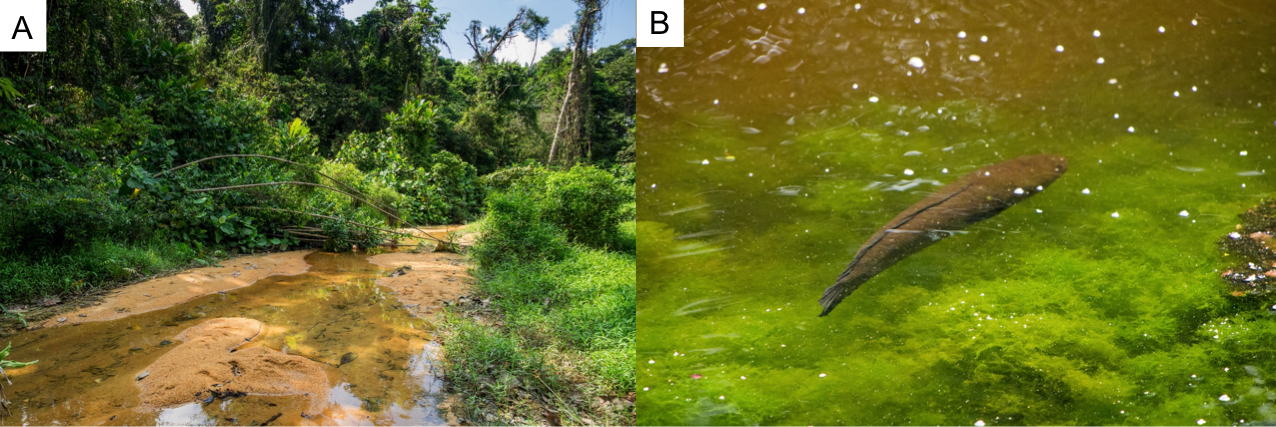
Figure 3: An open-canopy stream within the Central Catchment Nature Reserve, Singapore (A) and artificial pond habitat, Sungei Buloh Wetland Reserve, Singapore (B), where the common snakehead may be found (Photos: Kenny W.J. Chua)
Physical appearance
AdultAlthough the exact colour may vary, the live adult common snakehead can be distinguished from most other adult snakeheads by its relatively plain colour pattern, lacking distinct spots or blotches [6] (Figure 4). When compared with the similarly plain-coloured black snakehead (Channa melasoma), the common snakehead can be identified by the presence of (at times subtle) dark diagonal stripes on its dorsal surface, a more abrupt transition between dorsal and ventral colour patterns, and the absence of a thin white margin to the caudal and dorsal fins [6] (Figure 5). Lower jaw morphology also differs between the two species. In the common snakehead, the sides of the lower jaw are either parallel or converge towards the snout, whereas the jawline diverges slightly in the black snakehead [6] (Figure 6).
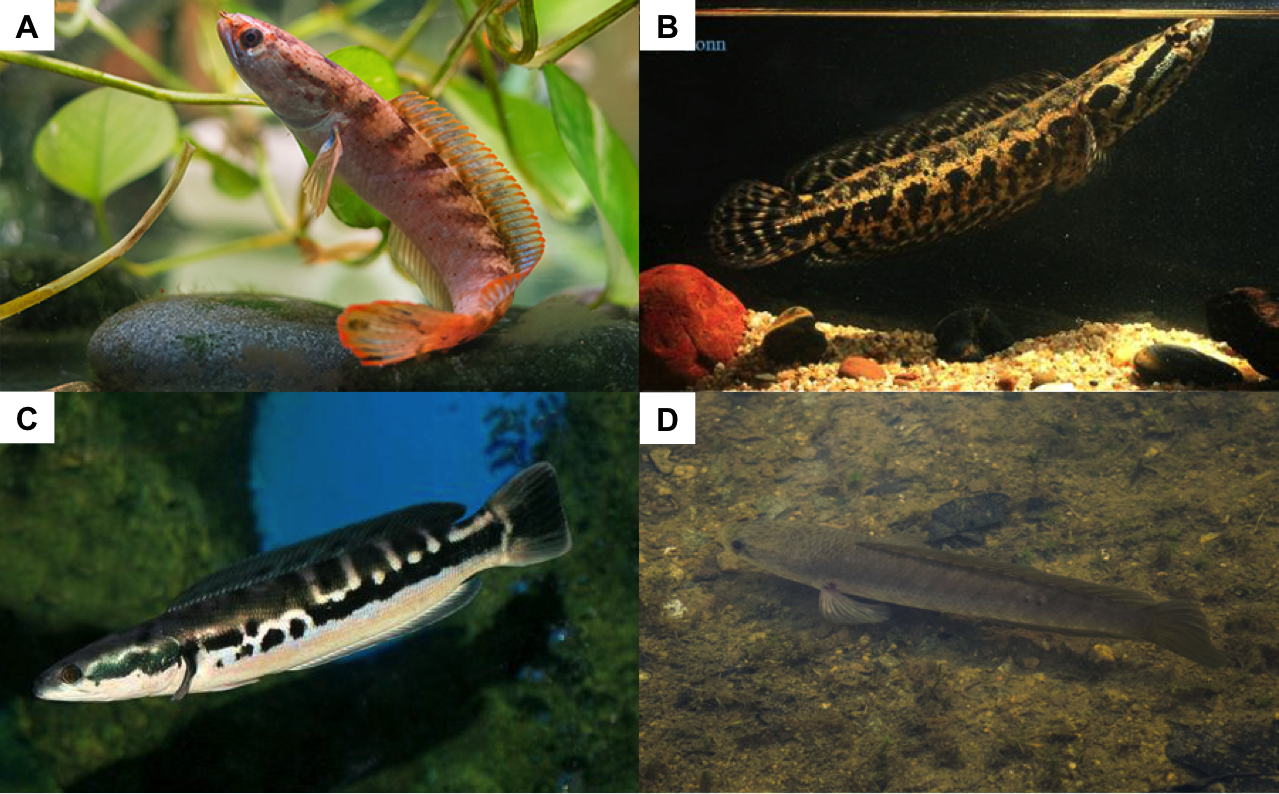
Figure 4: Compared to most other snakeheads that are found in Singapore, the adult common snakehead lacks bold patterns and colours (from A to D: dwarf snakehead (Channa gachua), forest snakehead (Channa lucius), giant snakehead (Channa micropeltes), common snakehead (Channa striata) (Photos: A—Kenny W.J. Chua; B—reproduced from siamensis.org, 2011 [7] under Creative Commons BY-NC-SA 4.0); C—reproduced from siamensis.org, 2011 [8] under Creative Commons BY-NC-SA 4.0); D—Tan Heok Hui, used with permission)
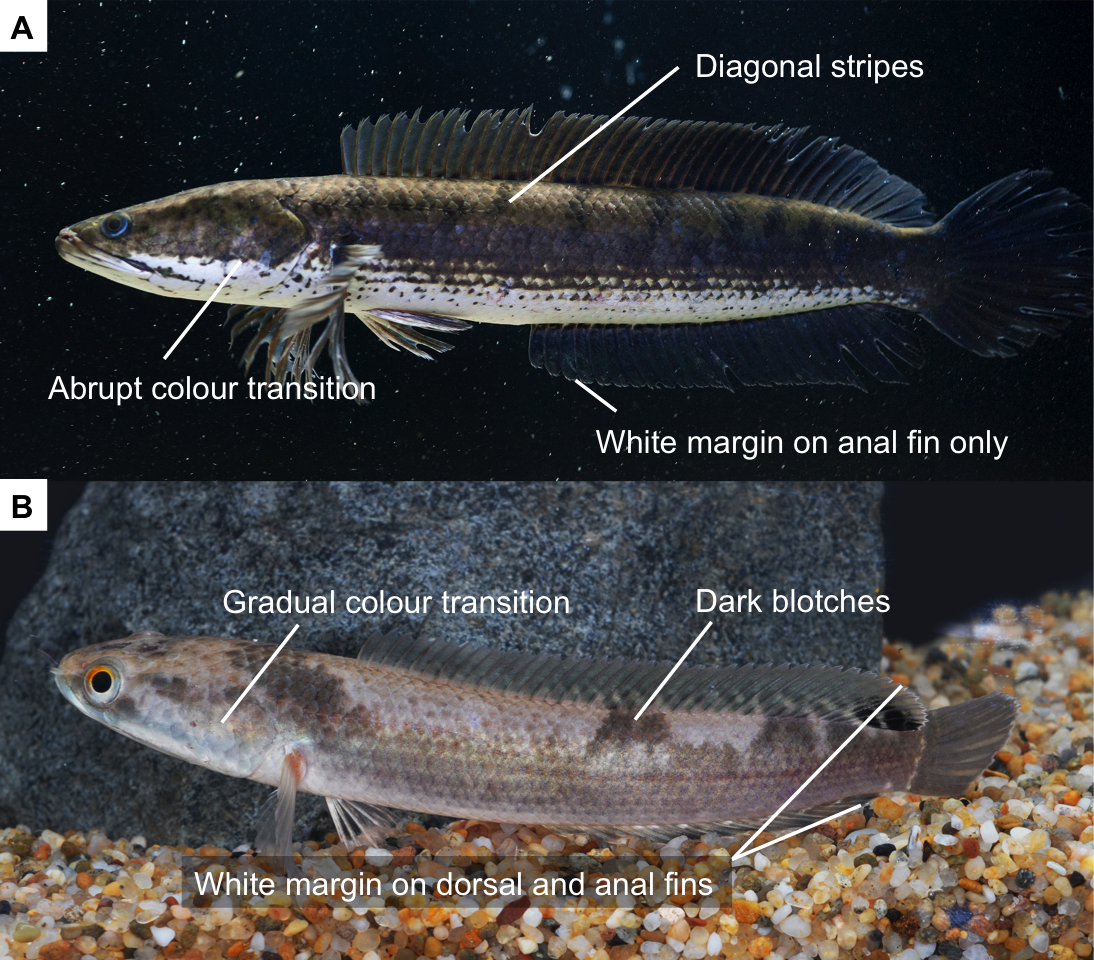
Figure 5: Comparing the common snakehead (Channa striata; A) and black snakehead (Channa melasoma; B) (Photos: Eric Er (A), Tan Heok Hui (B), used with permission; annotations added by Kenny W.J. Chua)
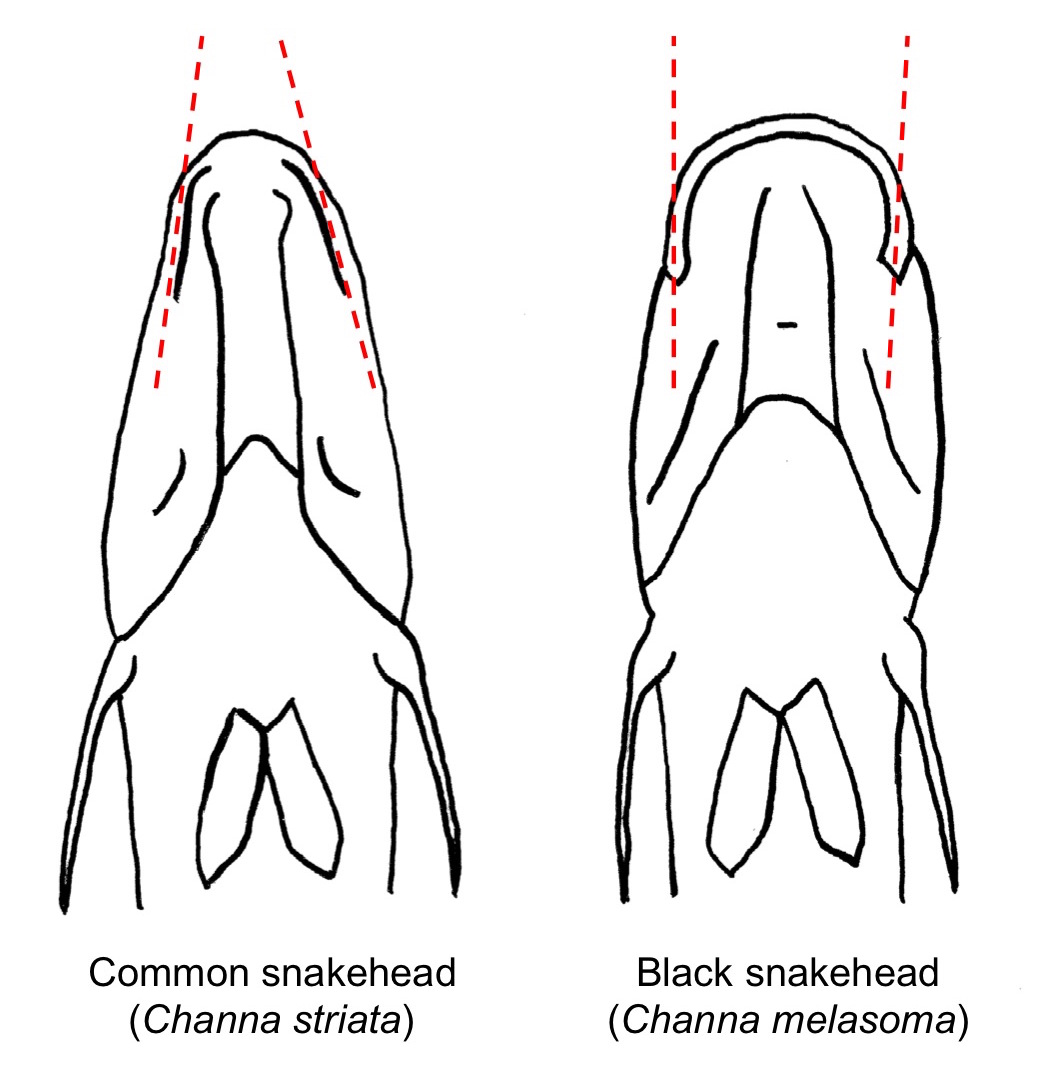
Figure 6: Jawline morphology of the common snakehead and the black snakehead; the common snakehead has a jawline that converges towards the snout, while that of the black snakehead is slightly divergent (after Ng & Lim, 1990 [6])
Body proportions of the common snakehead also differ from the black snakehead. Postorbital head length is between 28.6–37.2%; interorbital width is 5.1–8.9%; preopercular length ranges between 6.2–26.4%; pelvic-anal distance ranges from 3.5–8.8%; caudal length is 11.9–23.3% (measurements are in percentage of standard length) [3] (Figure 7).
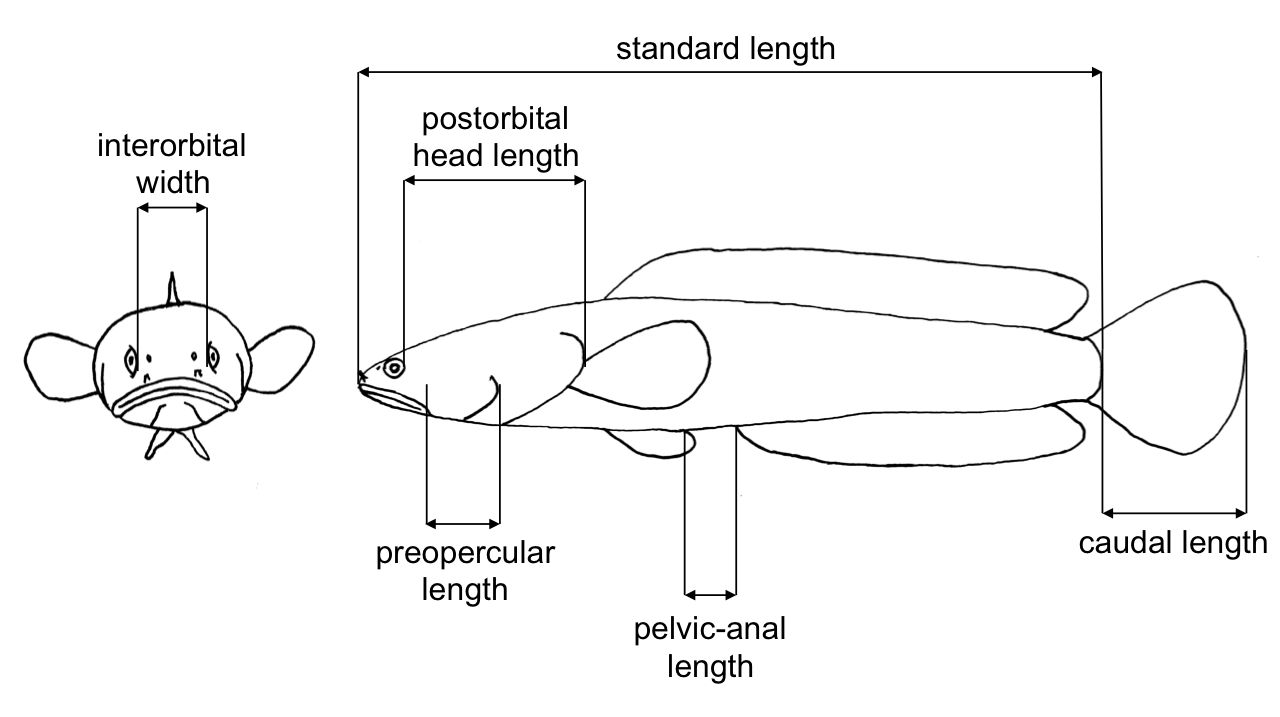
Figure 7: Morphometric measurements commonly used for diagnosing snakeheads (Illustration: Kenny W.J. Chua)
Juvenile
Juvenile snakeheads differ in appearance from adults. The larvae of most species have orange/red and black longitudinal bands that fade as the fish matures. However, the young of the common snakehead and the dwarf snakehead (Channa gachua) cannot be easily distinguished from each other—both possess a single broad orange (not red) longitudinal side along each flank, and black stripes are absent [6]. However, juveniles > 40 mm in length develop a “pseudo-ocellus”—a dark rounded spot near the rear lobe of the dorsal fin (Figure 8) This characteristic fades as the fish reaches adulthood [9]. Furthermore, it is noted that the young of the dwarf snakehead tend to take on their adult colouration earlier (Figure 4A) [6].
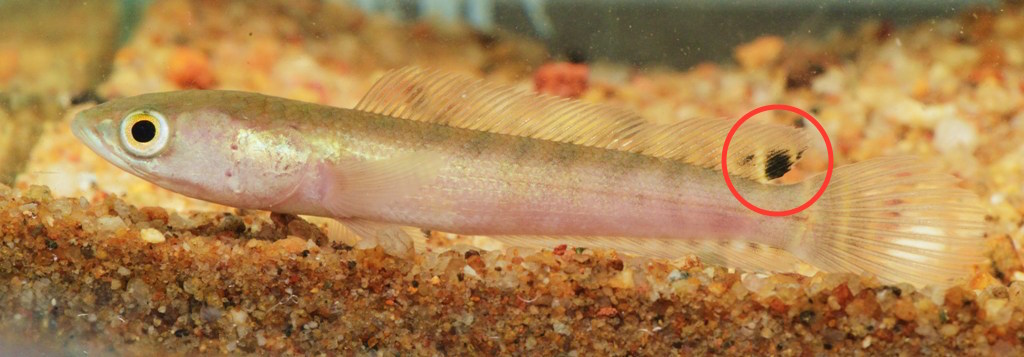
Figure 8: Juvenile common snakehead with pseudo-ocellus on rear of dorsal fin (circled) (Photo: Cai Yixiong, used with permission; annotation added by Kenny W.J. Chua)
Size
The common snakehead can reach a maximum size of 90 cm (standard length; see Figure 7) and weigh up to 3 kg [2, 10]. However, lengths of around 60 cm are more common [10].Feeding
DietThe common snakehead is a voracious predator that feeds on a variety of invertebrate and vertebrate prey. Adults feed mainly on fishes, frogs, tadpoles and crustaceans [3, 5, 11], while juveniles feed on fish fry, smaller crustaceans and other macroinvertebrates [12]. The larvae of this species feed on zooplankton [12].
Feeding behaviour
Like most other snakeheads, the common snakehead mainly hunts at night. This species is a solitary ambush predator (Video 1) that appears to be most active at dusk [6]. Its relatively drab colouration allows the animal to camouflage amongst aquatic vegetation and debris [6]. In addition, the common snakehead also possesses enlarged canine-like teeth which it uses to grip and tear prey [6].
Video 1: Captive common snakehead feeding on shrimp (Video: YouTube user 69peterek)
Air-breathing
The common snakehead is an obligate air-breather—regular trips to the surface are needed to obtain atmospheric oxygen [2], and it can “drown” if such access is denied [13]. Air-breathing is enabled by a specialised cavity located above the gills. This cavity contains mucous membranes lined with a rich network of blood vessels to increase oxygen uptake [6], allowing the fish to tolerate poorly oxygenated waters.Breeding
SexingAs with other snakeheads, it is difficult to distinguish between male and female common snakeheads since their external morphologies are highly similar. However, females are on average larger than males [6].
Spawning behaviour
Spawning has been reported throughout most of the year, and peaks during periods of high rainfall [2]. Spawning occurs over a shallow depression formed by removing aquatic vegetation [4]. The fishes form a spawning embrace in which the male wraps around the female, fertilising the eggs as they are released [6] (Video 2). The fertilised eggs then float to the surface, where they are guarded by one or both parents [2, 3].The young hatch in about three days [6].
Video 2: A mating pair of peacock snakeheads (Channa pulchra) exhibiting the spawning embrace typical of snakeheads (Video: YouTube user Paul Jones)
Brood care
Brood care in the common snakehead is well developed, and adults are noted to be aggressive when guarding young [6]. The young shoal near the surface (Figure 9), and are guarded by the parent(s) which remain(s) in the vicinity [2, 4] (Video 3). Females become sexually mature in two years, at a length of about 30 cm [1].
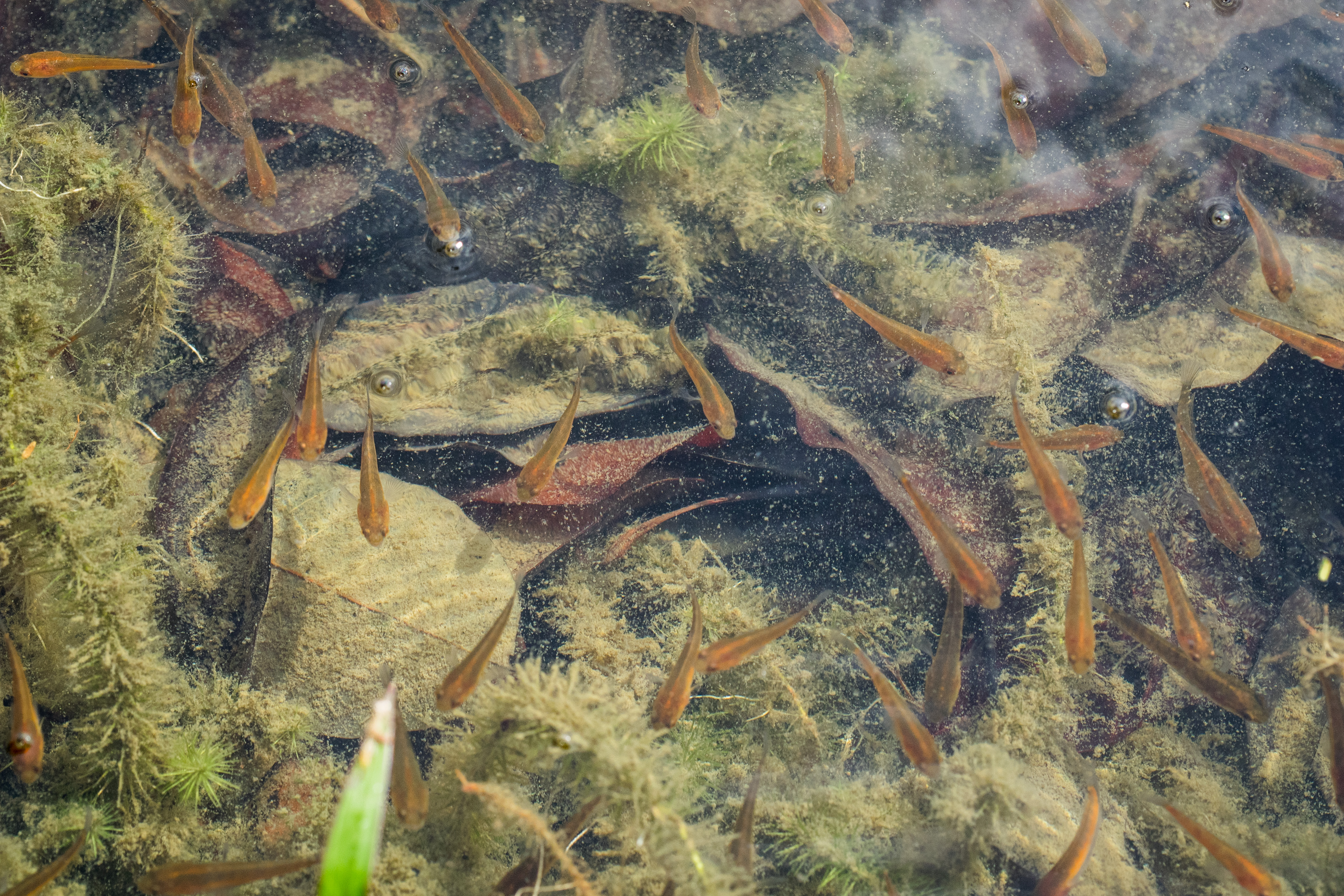
Figure 9: A shoal of young common snakeheads near the shore of MacRitchie Reservoir, Singapore (Photo: Kenny W.J. Chua)
Video 3: A pair of giant snakeheads (Channa micropeltis) guarding their brood—the common snakehead behaves similarly (Video: YouTube user David OKY)
Human use
As food fishThe common snakehead (along with other large snakehead species) is a favoured food fish in much of Southeast Asia, including Singapore [6, 10] (Figure 10). The flesh is firm, white and has minimal bones [15] (Figure 11). Furthermore, the flesh of the common snakehead is said to have healing properties, supposedly aiding in post-surgical recovery [see 2, 4, 16]. Given the air-breathing ability and hardiness of the common snakehead, its value as a food fish is bolstered by the ease of transporting and keeping this fish alive [6].

Figure 10: Common snakeheads sold in a marketplace at Palangkaraya, Central Kalimantan (A) (Photo: Tan Heok Hui, used with permission); live common snakehead in a marketplace in Singapore; note the high density made possible by the hardiness of the fish (B) (Photo: Eric Er, used with permission)
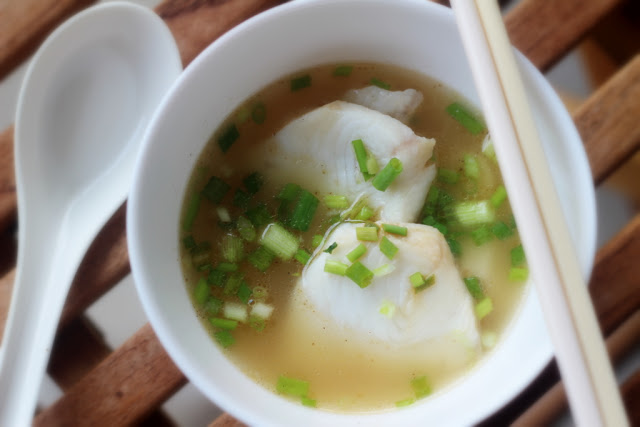
Figure 11: Common snakehead cooked in soup (Photo: Terry Wong, used with permission)
Common snakeheads are mostly produced in monoculture systems, where they are kept at high densities in outdoor ponds [17]. Spawning can be induced by sudden increases in water level to simulate the effects of heavy rain, or by injection of human chorionic gonadotropic hormone [18]. The fry are fed a blended mixture of trash fish and rice bran until they reach a mass of 0.7–1.0 kg in seven to ten months, upon which they are harvested [17].
As sport fish
The common snakehead is occasionally fished for sport (Video 4). It is said to respond well to both baits and lures [19].
Video 4: Common snakehead being fished from a flooded roadside ditch. (Video: YouTube user Channa Anglers)
As aquarium pets
Given its potential size, a suitably large tank is required to maintain the common snakehead in captivity. Apart from that, common snakeheads are (with a few caveats) relatively easy to maintain in aquaria because of their air-breathing ability and tolerance for a wide range of pH values [20]. However, as with other large fishes, efficient filtration and regular water changes are required to minimise buildup of waste products. Since they are obligate air-breathers, one must ensure these fishes are not denied access to the water surface. However, they are powerful jumpers, hence a tight-fitting and weighted lid is necessary.
As ambush predators, common snakeheads tend to move in sudden bursts—therefore tank decor must be firmly secured to prevent them from toppling and injuring the fishes. They tend to be highly territorial and aggressive towards most fishes, so tankmates are generally not recommended. While some specimens might initially eat nothing but live food, they can be trained to take commercial pellet food, supplemented by occasional meaty treats.
As pest fish
While the common snakehead is native to Singapore, the highly predatory nature of adults of this species is a potential threat to aquaculture of other freshwater fishes [6]. Furthermore, when introduced to waters outside its native distribution, the common snakehead’s high tolerance to a wide range of environmental conditions increases the chance of its establishment, thereby posing a potential risk to native aquatic fauna [2, 9].
However, while widely introduced as a food fish, the common snakehead has not been listed as an invasive species under the Global Invasive Species Database unlike its congener the northern snakehead (Channa argus) [21]. Although established populations of the common snakehead were reported from Madagascar and Hawaii, these reports have found to be attributed to erroneous identification of the blotched snakehead (Channa maculata) [2, 9] (Figure 12).
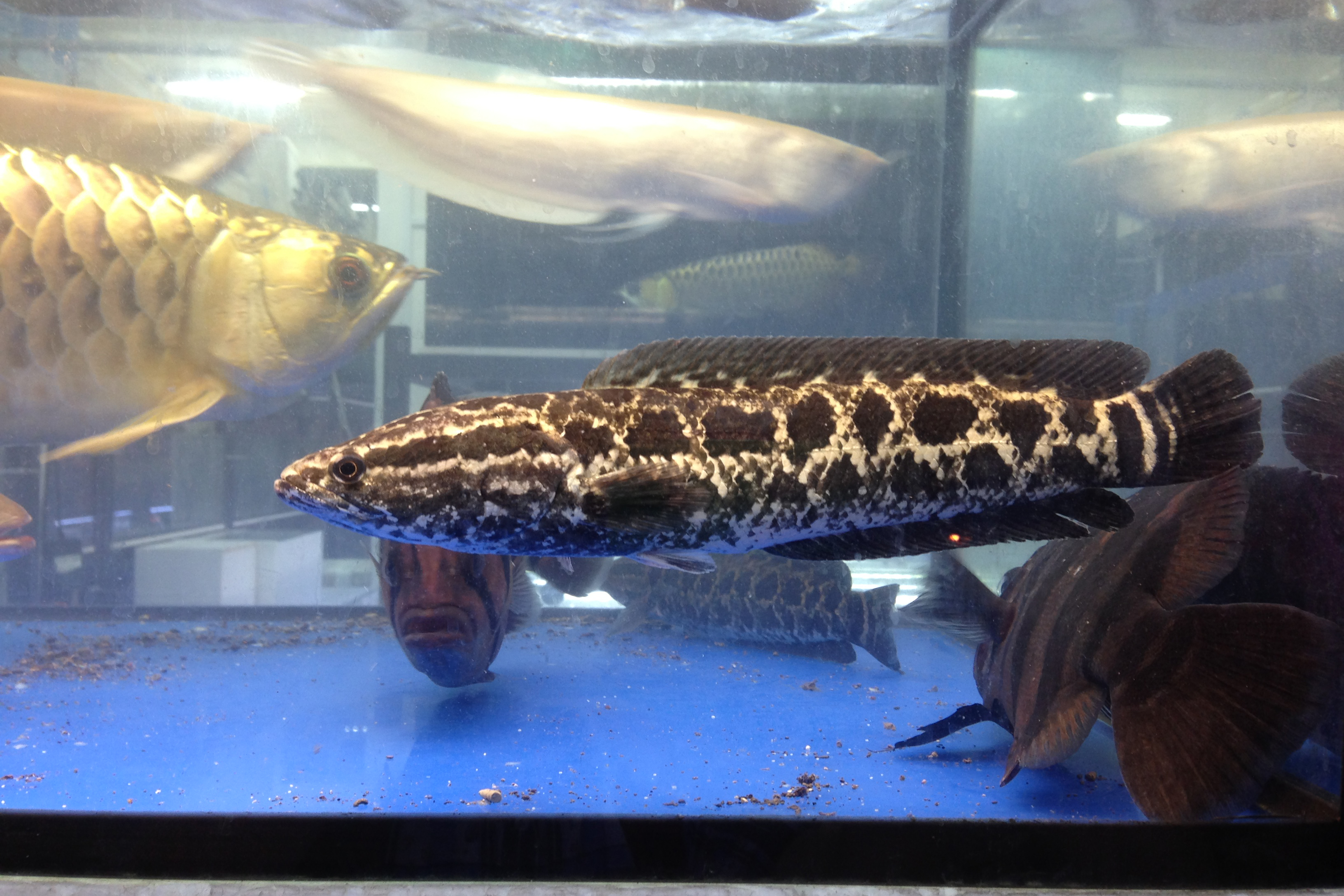
Figure 12: Blotched snakehead in an aquarium shop in Singapore (Photo: Kenny W.J. Chua)
Conservation status
Given its widespread distribution and tolerance, the common snakehead is listed as Least Concern on the IUCN Red List [1]. There are no known major threats to this species [1]—exploitation of wild stocks of this species has largely stabilised, and demand is increasingly met by captive-bred fishes [22]. Furthermore, fisheries stocks in heavily fished open waters are supplemented by fishes migrating from shallow-water habitats, where they are not as heavily fished [23].However, Channa striata is possibly a species complex (see Species complex) [2]. As such, re-assessment of extinction risk will be required after taxonomic revision. This is especially pertinent because the common snakehead is frequently transported for aquaculture—this could unwittingly allow as-yet unrecognised members of this species complex to hybridise, causing erosion of genetic identity.
Unlike some forest-dwelling snakehead species in Singapore [24], the common snakehead is not listed on the Singapore Red Data Book, likely indicating that this highly adaptable species is not locally threatened. This is probably attributable to its general hardiness, enabling to survive in even highly modified aquatic habitats.
Taxonomy and systematics
Taxonomic hierarchy| Kingdom |
Animalia |
| Phylum |
Chordata |
| Class |
Actinopterygii |
| Subclass |
Neopterygii |
| Infraclass |
Teleostei |
| Superorder |
Acanthopterygii |
| Order |
Perciformes |
| Suborder |
Channoidei |
| Family |
Channidae |
| Genus |
Channa Scopli, 1777 |
| Species |
Channa striata (Bloch, 1793) |
Etymology
The genus name Channa is derived from the Greek word “channe”, referring to an unspecified sea perch [10]. The species epithet striata comes from the Latin “striatus”, referring to the dorsal stripes on this species. The common name snakehead derives from the deprecated genus name Ophicephalus (see Synonyms)—"ophis" is a Greek term referring to a snake or serpent, while "cephalus" is the Greek word for head. This name references the snake-like appearance of the fish's head due to the presence of large cephalic scales.
Synonyms
Ophicephalus striatus Bloch, 1793 [26]; Ophiocephalus wrahl Lacépède, 1802 [27]; Ophiocephalus chena Hamilton-Buchanan, 1822 [28]; Ophicephalus planiceps Cuvier, 1831 [29]; Ophicephalus sowarah Bleeker, 1845; Ophiocephalus cyanospilos Bleeker, 1853; Ophiocephalus vagus Peters, 1868 [30]
Type specimens
No holotype was designated for Channa striata. Instead, there are two syntypes currently deposited in the Museum für Naturkunde, Berlin: ZMB 1400 and ZMB 6522 [2]. The type locality is Tranquebar, Malabar, India [2].
Description
Body largely cylindrical in cross-section but slightly compressed dorso-ventrally [6, 10]. Dorsal surface and flanks darker than ventral surface; dark, oblique striations present on dorsum. Large head with deeply gaping, fully toothed mouth [10]; caniform teeth present on lower jaw [6]. Cephalic shields large and distinct; sides of lower jaw parallel or converging [6]. Pelvic fins well developed; margins of anal fin may be lined with white, but not so for caudal and dorsal fins; ocellus absent [6].
Lateral line scales 53–55 [10]. Dorsal and anal spines absent; dorsal soft rays 38–43; anal soft rays 23–27 [10]. Postorbital head length 28.6–37.2%; interorbital width 5.1–8.9%; preopercular length 6.2–26.4%; pelvic-anal distance 3.5–8.8%; caudal length 11.9–23.3% (measurements in percentage of standard length) [3].
Taxonomic history
Channa striata was originally described as Ophicephalus striatus Bloch, 1793 [26] (Figure 13). The external morphology of the fish was described as follows (translated from Latin with assistance from Henrietta Woo):
“Body elongated and striped, with head tapering to a point. Lower jaw longer than upper jaw. Ventral fins small, dorsal and anal fins with brown, oblique striations. Nasal tentacles present.”
The rest of Bloch's description of the species mentions meristic characters and internal anatomy.
The genera Channa Scopoli, 1777 [31] and Ophicephalus Bloch, 1793 (sometimes misspelled as “Ophiocephalus”) were originally diagnosed by the absence or presence of pelvic fins, respectively. However, the use of this diagnostic character subsequently fell out of favour [32], and as a result Channa and Ophicephalus were synonymised, with the senior synonym Channa taking precedence (see Ng & Lim, 1990 [6] for a detailed account of the taxonomic history of the genus). Correspondingly, the species epithet was changed from the masculine striatus to the feminine striata. It was later confirmed that the loss of pelvic fins is indeed a homoplasy at the species level [33], and thus should not be used as a character for delimiting the two genera.
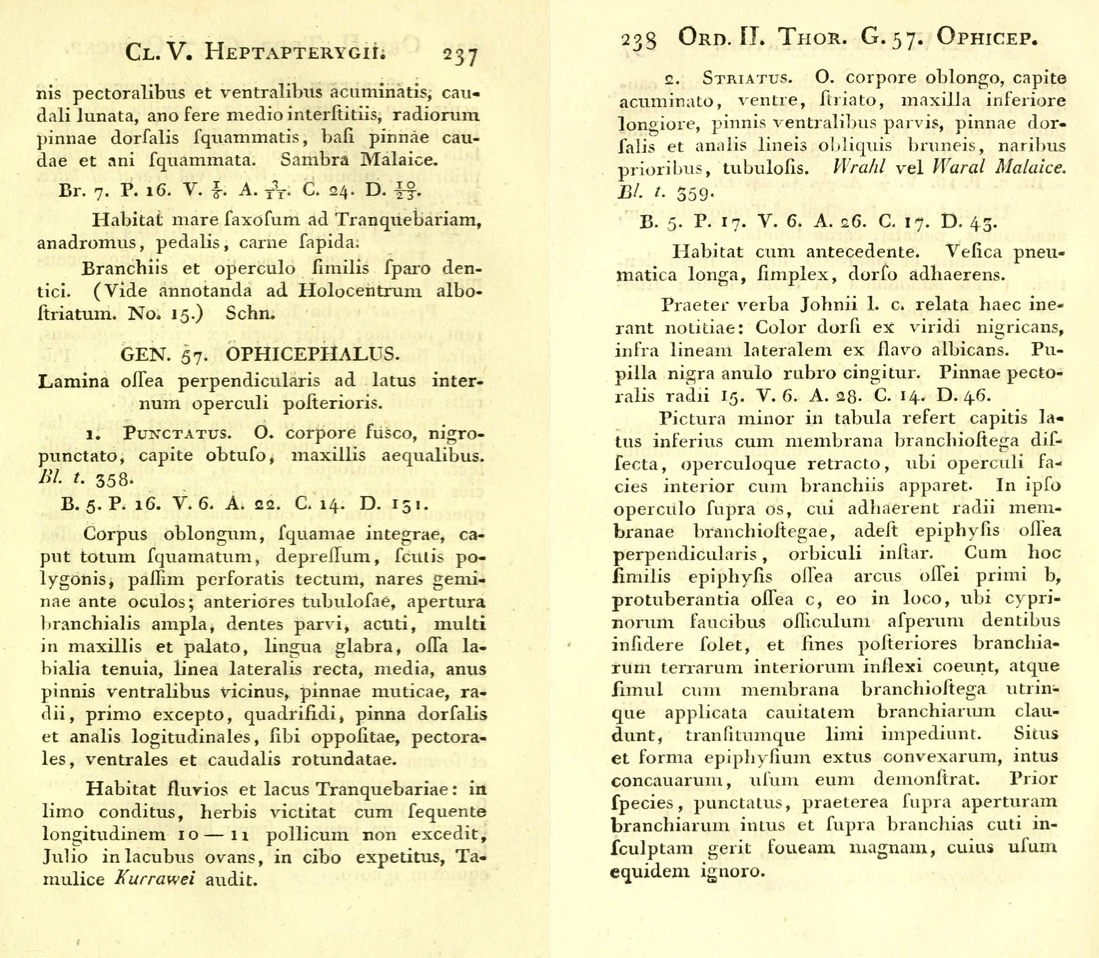
Figure 13: Bloch's original description of Ophicephalus striatus [26], available at the Biodiversity Heritage Library
Species complex
The wide-ranging native distribution of Channa striata suggests that it might be a species complex [2]—i.e., Channa striata could actually comprise of multiple species. This is supported by disparities in chromosome number between specimens from India (2n = 40) [34] and Thailand (2n = 44) [35]. At the time of writing, there is no published information on chromosome number for individuals found in Singapore. Similarly, there are no published records on whether crosses between these regional varieties can produce fertile offspring. No subspecies are currently recognised from the various localities of Channa striata.
Phylogeny
The family Channidae comprises of two genera—the Eurasian Channa (ca. 26 species) and the African Parachanna (three species). It is thought that the Channoidei, which contains Channidae as the sole family, is closely related to the Percoidei and Anabantoidei. The affinity of the Channoidei to the latter group [33] is especially evident from the spawning embrace behaviour exhibited by species in both groups [6] (see Spawning behaviour).
Molecular phylogeny of the Channidae suggests that both Channa and Parachanna are monophyletic clades [33] (Figure 14). This evidence is compatible with known morphological differences in the air-breathing organs of the two genera, and thus supports their current state of classification [36, 37]. Within the genus Channa are several monophyletic clades. Channa striata is sister to the clade containing the “dwarf snakeheads” Channa bleheri, Channa gachua, Channa orientalis, and few larger species (clade B; Figure 14). Together, they possibly diverged from the clade containing Channa argus, Channa asiatica and Channa maculata (clade 4; Figure 14). However, the exact relationship between Channa striata, clade B, clade 3 and clade 4 remains uncertain because of poor support values for the phylogenetic tree (Figure 14).
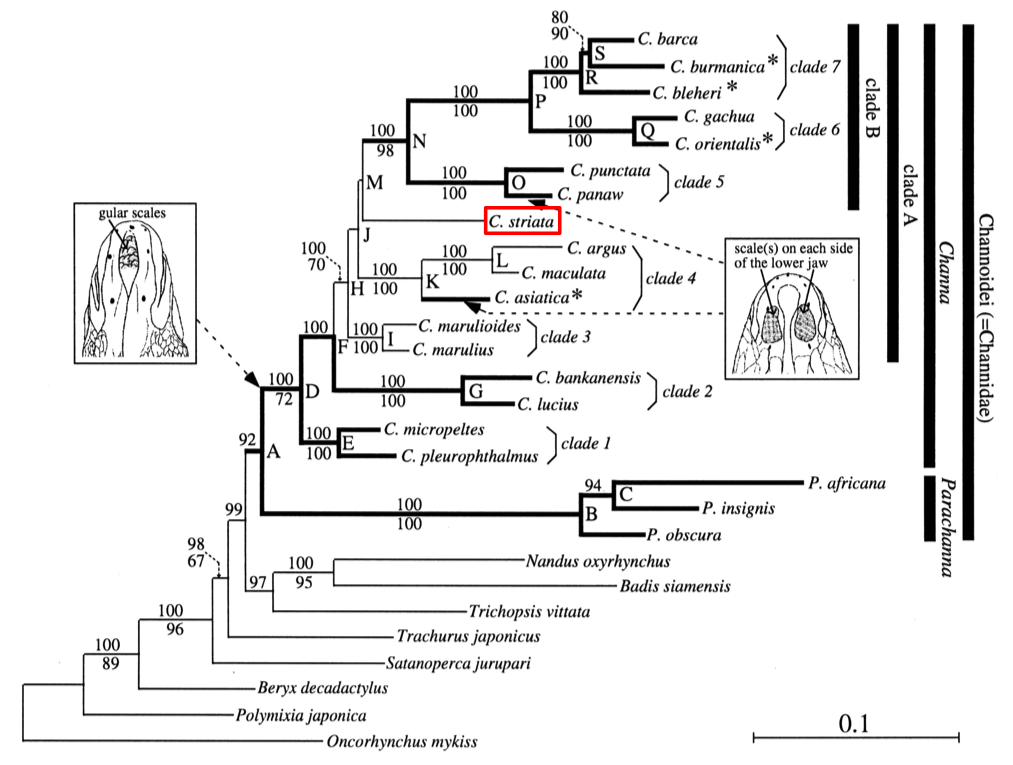
Figure 14: Maximum-likelihood tree for the Channidae reconstructed using the ND2 gene and flanking sequences as characters. Numbers above and below branches represent Bayesian posterior probability values and bootstrap probabilities obtained from 500 replications of maximum-parsimony analysis, respectively. Bold lines correspond to indicated characters, i.e., gular scales and scale(s) on lower jaw. (Reproduced from Li et al., 2006 [33]; emphasis on Channa striata added; used with permission from corresponding author, pending permission from publisher)
Useful links
Snakehead species in Singapore [link]More on the common snakehead in Singapore [link]
Maintaining snakeheads in captivity [link]
Common snakeheads as sport fish [link]
Recipe for snakehead soup [link]
References
Texts1. Chaudhry, S. Channa striata. The IUCN Red List of Threatened Species 2010: e.T166563A6237224. 2010 [cited 2015 9 September]; Available from: http://www.iucnredlist.org/details/166563/0.
2. Courtenay, W.R. and J.D. Williams, Channa striata (Bloch, 1793): chevron snakehead, in Snakeheads (Pisces, Channidae)—A Biological Synopsis and Risk Assessment. 2004, U.S. Geological Survey Circular. p. 115–120.
3. Lee, P.G. and P.K.L. Ng, The systematics and ecology of snakeheads (Pisces: Channidae) in Peninsular Malaysia and Singapore. Hydrobiologia, 1994. 285: p. 59–74.
4. Lim, K.K.P. and P.K.L. Ng, A Guide to the Freshwater Fishes of Singapore. 1990, Singapore: Singapore Science Centre.
5. Baker, N. and K.K.P. Lim, Wild animals of Singapore. 2012, Singapore: Draco Publishing & Nature Society (Singapore). 180.
6. Ng, P.K.L. and K.K.P. Lim, Snakeheads (Pisces: Channidae): natural history, biology and economic importance, in Essays in Zoology. Papers Commemorating the 40th Anniversary of the Department of Zoology, National University of Singapore, L.M. Chou and P.K.L. Ng, Editors. 1990, Department of Zoology, National University of Singapore: Singapore.
7. siamensis.org. Channa lucius. siamensis.org: Thailand Nature Explorer 2011 [cited 2015 14 Nov]; Available from: http://www.siamensis.org/species_index - 2445--Species : Channa lucius.
8. siamensis.org. Channa micropeltes. siamensis.org: Thailand Nature Explorer 2011 [cited 2015 14 Nov]; Available from: http://www.siamensis.org/species_index - 2455--Species : Channa micropeltes.
9. Courtenay, W.R., et al., Identity of introduced snakeheads (Pisces, Channidae) in Hawai'i and Madagascar, with comments on ecological concerns. Bishop Museum Occasional Papers, 2004. 77: p. 1–13.
10. Santos, D.N. Channa striata (Bloch, 1793). Fishbase 2014 [cited 2015 9 Sep]; Available from: http://www.fishbase.org/country/CountrySpeciesSummary.php?c_code=608&id=343.
11. Rahman, A.K.A., Freshwater Fishes of Bangladash. 1989, Department of Zoology, University of Dhaka: Zoological Society of Bangladash. 364.
12. Conlu, P.V., Guide to Philippine flora and fauna, Vol IX of Fishes. 1986: Natural Resources Management Center Ministry of Natural Resources and University of the Philippines. 495.
13. Lim, K.K.P., Fins and scales, in Private Lives: An Exposé of Singapore's Freshwaters, D.C.J. Yeo, L.K. Wang, and K.K.P. Lim, Editors. 2010, Raffles Museum of Biodiversity Research: Singapore. p. 136–151.
14. Smith, H.M., The fresh-water fishes of Siam, or Thailand. U.S. Natural Museum Bulletin, 1945. 188: p. 1–622.
15. Davidson, A., Fish and fish dishes of Laos. 1975, Vientiane: Imprimerie Nationale. 202.
16. Yeo, D.C.J., K.K.P. Lim, and L.K. Wang, View from the top, in Private Lives: An Exposé of Singapore's Freshwaters, D.C.J. Yeo, L.K. Wang, and K.K.P. Lim, Editors. 2010, The Raffles Museum of Biodiversity Research: Singapore. p. 190–193.
17. Wee, K.L. Snakehead (Channa striatus) farming in Thailand. FAO Corporate Document Repository 1981 [cited 2015 14 Nov]; Available from: http://www.fao.org/docrep/field/003/ac255e/ac255e00.htm.
18. Yaakob, W.A.A.W. and A.B. Ali, Simple method for backyard production of snakehead (Channa striata Bloch) fry. Naga, 1992. 15(2): p. 22–23.
19. Juan Wei. Haruan - Striped Snakehead, Common Snakehead, Channa Striata. Sport Fishin.Asia 2009 [cited 2015 21 Nov]; Available from: http://sportfishin.asia/catch-reports-tips-and-techniques/snakehead-fishing/channa-striata-2/.
20. Ng, H.H. Quick guide to snakeheads. Practical Fishkeeping 2010 [cited 2015 14 Nov]; Available from: http://www.practicalfishkeeping.co.uk/content.php?sid=3190.
21. Global Invasive Species Database. Channa argus. Global Invasive Species Database 2009 [cited 2015 10 Sep]; Available from: http://www.issg.org/database/species/ecology.asp?si=380&fr=1&sts=sss&lang=EN.
22. FAO Fisheries and Aquaculture Department. Channa striata (Bloch, 1793). Species Fact Sheets 2015 [cited 2015 20 Aug]; Available from: http://www.fao.org/fishery/species/3062/en.
23. Amilhat, E. and K. Lorenzen, Habitat use, migration pattern and population dynamics of chevron snakehead Channa striata in a rainfed rice farming landscape. Journal of Fish Biology, 2005. 67(Supplement B): p. 23–34.
24. Lim, K.K.P., Fishes, amphibians and reptiles, in The Singapore Red Data Book: threatened plants & animals of Singapore, G.W.H. Davison and H.C. Ho, Editors. 2008, Nature Society (Singapore): Singapore. p. 263–265.
25. Integrated Taxonomic Information System. 25Channa striata (Bloch, 1793). Integrated Taxonomic Information System 2015 [cited 2015 1 Sep]; Available from: http://www.itis.gov/servlet/SingleRpt/SingleRpt?search_topic=TSN&search_value=166667.
26. Bloch, M.E. and J.G. Schneider, Systema Ichthyologiae Iconibus CX illustratum. 1801, Berlin. 584.
27. Lacépède, B.G., Notice historique sur la vie et les ouvrages de Dolomieu. 1802, Paris: Bossange.
28. Hamilton-Buchanan, F., An Account of the Fishes Found in the River Ganges and Its Branches. 1822, Edinburgh and London.
29. Cuvier, G. and A. Valenciennes, Histoire Naturelles des Poissons. Vol. 7. 1831, Paris-Strasbourg. xxix+531.
30. Peters, W.C.H., Über die von Herrn Dr F. Jagor in dem ostindischen Archipel gesammelten Fische. Monatsbericht der Akademie Wissenschaften zu Berlin, 1868. 1868: p. 254–281, 460–461.
31. Scopoli, G.A., Introductio ad historiam naturalem etc. 1777, Pragae. x+506.
32. Myers, G.S. and L. Shapovalov, On the identity of Ophicephalus and Channa, two genera of labyrinth fishes. Peking Natural History Bulletin, 1931. 6: p. 33–37.
33. Li, X., P. Musikasinthorn, and Y. Kumazawa, Molecular phylogenetic analyses of snakeheads (Perciformes: Channidae) using mitochondrial DNA sequences. Icthyological Research, 2006. 53: p. 148–159.
34. Banerjee, S.K., K.K. Misra, and S.P. Ray-Chaudhuri, Chromosome numbers, genome sizes, cell volumes and evolution of snake-head family (family Channidae). Journal of Fish Biology, 1988. 33: p. 781–789.
35. Donsakul, T. and W. Magtoon, Chromosome study on five species of channid fishes [Channa, family Channidae], from Thailand. Proceedings of the 29th Kasetsart University Annual Conference: Animal Science, Veterinary Science, and Aquaculture: Bangkok, Thailand, 1991: p. 561–574.
36. Bonou, J.L., Révision systématique du genre Parachanna Teugels et Daget, 1984 (Pisces: Channidae). Revue d’Hydrobiolgie Tropicale, 1985. 18: p. 267–280.
37. Senna, A., Sull’organe respiratoria soprobranchiale degli Afiocefalidi e sus semplificazione in Parophiocephalus subg. N. Monitore Zoologico Italiano, 1924. 35: p. 149–160.
Multimedia
Figures 1, 5 & 10. Photographs by Eric Er.
Figures 2, 3, 4, 6, 7, 9 & 12. Map, photographs and illustrations by Kenny W.J. Chua.
Figures 4, 5 & 10. Photographs by Tan Heok Hui.
Figure 8. Photograph by Cai Yixiong.
Figure 11. Photograph by Terry Wong.
Figure 13. Scan of manuscript [26] by the Biodiversity Heritage Library.
Figure 14. Figure by Li et al. (2006) [35].
Video 1. "Channa striata vs shrimp HD" by 69peterek YouTube Channel, 2 Jul 2013. URL: https://www.youtube.com/watch?v=m_2lv9rZUCs [cited 21 Nov 2015]
Video 2. "Snakeheads Spawning Ritual - Eggs Released" by Paul Jones YouTube Channel, 21 Oct 2012. URL: https://www.youtube.com/watch?v=JxZqQxhTV5A [cited 2015 1 Nov].
Video 3. "Beautiful leisurely Giant snakehead fish and fry" by David OKY YouTube Channel, 19 May 2014. URL: https://www.youtube.com/watch?v=LnNHozXqnyM [cited 2015 1 Nov].
Video 4. "Channa Anglers Common Snakehead Haruan Gabus Fishing Channa Striata" by Channa Anglers YouTube Channel, 24 Aug 2014. URL: https://www.youtube.com/watch?v=4WBcB5ilGes [cited 21 Nov 2015]
See linked documents to understand how this page was conceptualised, and the methods used in compiling the relevant information.
Last updated by Kenny W.J. Chua (kenny.chua[at]u.nus.edu) on 21 Nov 2015.